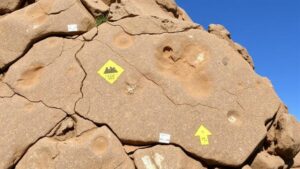Techniques for Locating Undisturbed Gravel Beds in Mountain Streams
Techniques for Locating Undisturbed Gravel Beds in Mountain Streams
Gravel beds in mountain streams serve as critical habitats for various aquatic species, including fish and macroinvertebrates. Understanding how to locate these undisturbed gravel beds is important for conservation efforts and stream ecology studies. This article discusses various techniques used in the field, supported by case studies and data, to effectively identify these unique habitats.
The Importance of Undisturbed Gravel Beds
Undisturbed gravel beds provide essential spawning grounds for fish species such as salmon and trout. e beds allow for sediment filtration and offer refuge for flora and fauna. According to a study published in the journal
Ecological Engineering
, loss of these habitats can lead to decreased biodiversity and diminished water quality.
Field Survey Techniques
Field surveys are crucial for identifying undisturbed gravel beds. The following techniques can be employed:
- Visual Assessments: Experienced ecologists can visually inspect streams for areas with intact gravel beds that are not impacted by erosion or sedimentation.
- Transect Surveys: Establishing transects across various points in a stream helps in systematically sampling different sections. Stream widths can vary drastically, often influencing gravel bed continuity.
- Depth Measurements: Using equipment like depth poles helps to determine the substrate composition and identify gravel layers beneath the water surface.
Use of Technology
Advancements in technology have enhanced the capability to locate undisturbed gravel beds more efficiently. Some key tools include:
- GIS Mapping: Geographic Information Systems (GIS) integrate various data layers, allowing researchers to visualize terrain, stream flow patterns, and existing gravel bed locations.
- Drone Surveys: Drones equipped with high-resolution cameras can capture aerial footage, helping scientists to identify areas of potential gravel beds without disturbing the environment.
- Sonar Technology: Sonar equipment can be used to map underwater substrate types, providing more precise data on the location and size of gravel beds.
Hydrological Assessments
Understanding the hydrology of mountain streams is essential for locating undisturbed gravel beds. Factors such as flow velocity, sediment transport, and seasonal variations significantly affect gravel bed formation. Here are crucial insights into hydrological assessments:
- Stream Flow Studies: Research indicates that stable flow conditions favor the development of undisturbed gravel beds. Conducting flow measurements during different seasons can elucidate sediment dynamics.
- Flood History Analysis: Historical flood data can reveal patterns of disturbance; areas frequently hit by floods may have altered gravel bed compositions.
Site-Specific Case Studies
Several case studies illustrate successful techniques for locating undisturbed gravel beds:
- The Animas River, Colorado: Researchers utilized combined sonar mapping and visual assessments to discover undisturbed gravel beds pivotal for local fish species, significantly impacting conservation programs.
- The Elwha River Restoration Project, Washington: Following dam removals, pre-restoration surveys employed drone technology, leading to the identification of new gravel habitats critical for salmon spawning.
Potential Challenges
Despite the techniques available, several challenges can hinder the identification of undisturbed gravel beds:
- Seasonal Changes: Sediment patterns shift frequently due to seasonal weather changes, making it difficult to have a consistent approach all year round.
- Human Impact: Urban development and agricultural runoff can drastically alter stream dynamics, complicating the detection of natural gravel beds.
Conclusion and Actionable Takeaways
Locating undisturbed gravel beds in mountain streams is integral to ecological conservation and management. Incorporating both traditional field methods and modern technology can lead to more effective identification and preservation strategies. Here are some actionable takeaways:
- Use a combination of visual assessments and transect surveys for field studies.
- Use GIS mapping and drone surveys to enhance data collection efficiency.
- Conduct thorough hydrological assessments to understand sediment transport patterns.
Through these techniques, conservationists and researchers can more effectively protect the critical habitats provided by undisturbed gravel beds, ensuring the sustainability of aquatic ecosystems.



